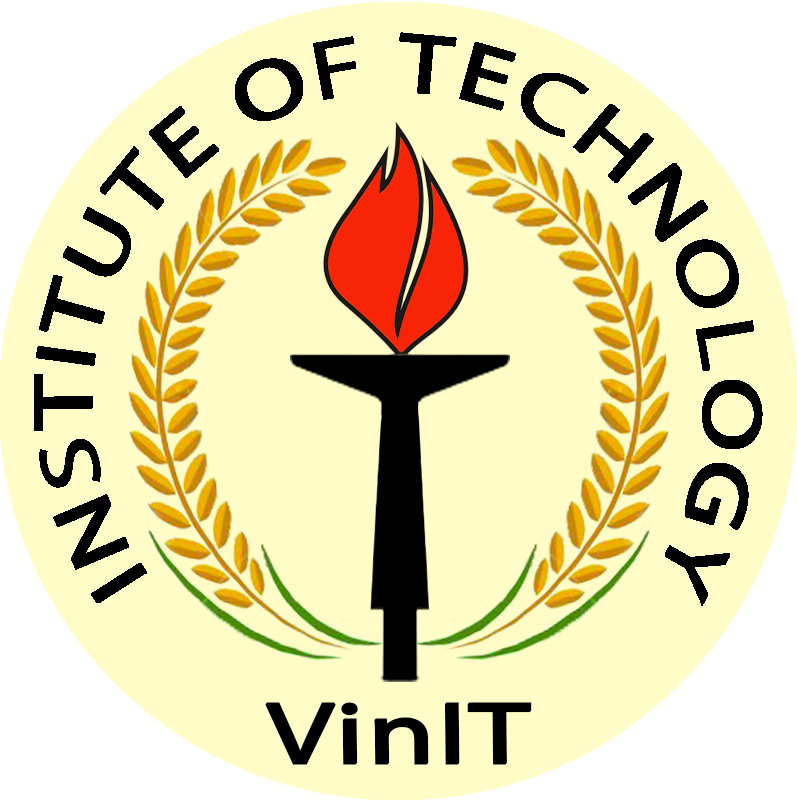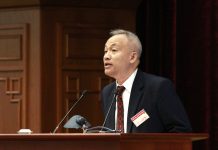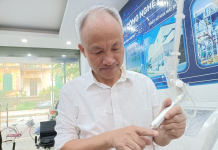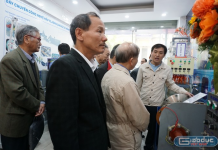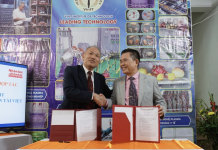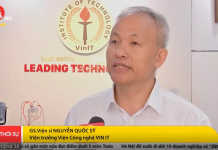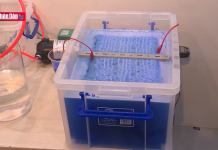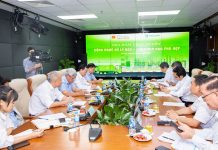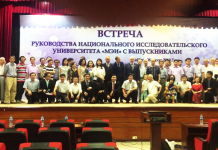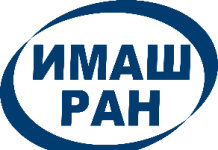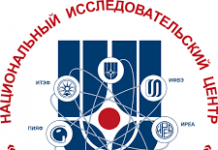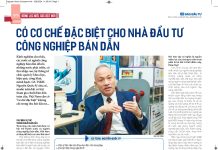GDVN- Vietnam needs to have its own model and approach based on the experience and support of other countries for the semiconductor and microelectronics industry.
On November 24, at the regular discussion of the Association of Vietnam Universities and Colleges, Professor, Academician Nguyen Quoc Sy – Chairman of VinIT Institute of Technology shared proposals on research and training of human resources for high technology development, first of all for the semiconductor industry.
There are still many difficulties in training high-tech industries
According to Professor Nguyen Quoc Sy, the goal of training high-tech industries is to provide high-quality human resources for the cause of industrialization and modernization of the country.
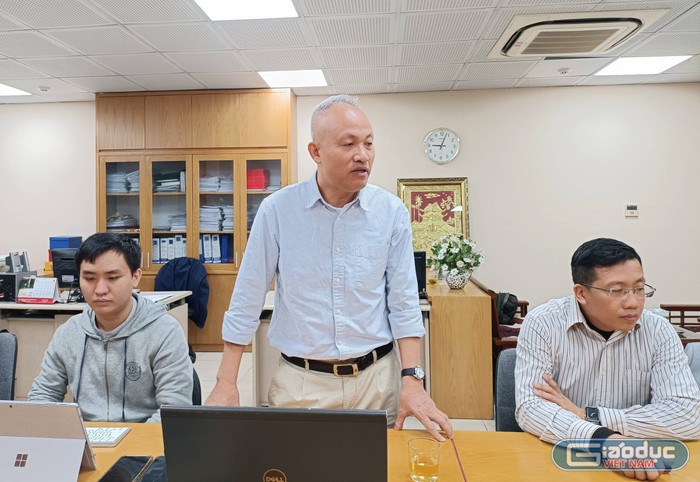
The specific tasks are: Providing a force of scientific staff, senior experts, and engineers in high-tech majors to ensure harmonious development of the economy, maintaining national security, autonomy, independence and extensive international cooperation in national development;
Creating training plans and approaches to produce top-notch human resources for the technology sector in line with national development objectives;
Thereby contributing to building and developing high-tech industries, applied technologies, and high-quality research and training centers; Building training models for high-tech majors, organizational models for management and development of high-tech industrial centers, and high-tech application systems; Building a human resources database, preparing resources for high-tech application projects; Building and developing the science and technology market, including the market for high-quality human resources for domestic use and cooperation with foreign countries.
In the training of high-tech industries, Professor Nguyen Quoc Sy assessed that there are some advantages but also many difficulties.
The first difficulty is that the investment budget for training high-quality human resources in technology industries accounts for a small proportion of the total budget expenditure.
The second issue is the absence of a team of senior experts to train high-quality human resources in technology industries, especially today’s key technology industries such as the semiconductor industry and microelectronics manufacturing industry, advanced materials industry, high-tech agricultural industries, environmental industries, climate change prevention,…
Third, there are difficulties in the system of research centers, modern laboratories, training facilities combining applied research, which are not synchronized, and many equipment systems are used ineffectively. Modern equipment is concentrated mainly in two large cities, Hanoi and Ho Chi Minh City, while many high-tech application tasks require the reallocation of human resources and equipment to other applications. on-site use;
Fourth, the high-quality human resource market has not been operated scientifically, causing congestion between supply and demand, greatly affecting not only the quality of training but also the output of training products;
Fifth, the system of documents and training programs is still “deficient, redundant and weak”, not close to reality, needs innovation in quality, and does not create conditions for training institutions to effectively exploit internal resources, and international cooperation (including issues of university autonomy, open training models, and links with training institutions around the world).
Solutions for training in the semiconductor and microelectronics industry
Sharing about the semiconductor and microelectronics industry in Vietnam, Professor Nguyen Quoc Sy commented that, in Vietnam’s specific conditions, it is necessary to have its own model and approach based on the experience and support of the government. Countries for the semiconductor and microelectronics industry must fully meet the criteria on training capacity, output market, production and investment scale;
Vietnam needs to have all the prerequisites: appropriate and effective policy mechanisms to attract investment for training in the entire semiconductor and microelectronics industries, and political determination of the entire system. To be able to build an organizational structure to manage and deploy strategies and implement the semiconductor and microelectronics industry, invest heavily in people, equipment, and finance not only for training experts but also to produce and commercialize the semiconductor and microelectronics industries.
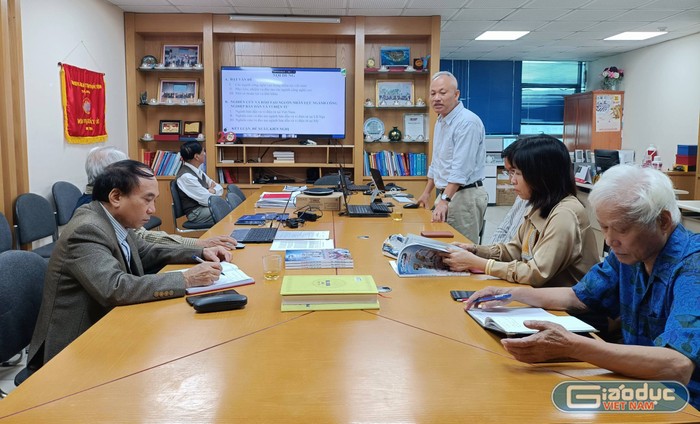
On that basis, we can deeply participate in the global semiconductor and microelectronics supply chain, and can proactively or partially dominate this process to proactively train semiconductor and microelectronics industry experts.
Professor Nguyen Quoc Sy proposed that it is necessary to restructure and reorganize the system of universities and research institutes towards system integration, using common equipment, specialized laboratories, and training materials. High-tech industries contribute to fundamentally solving set tasks, minimizing difficulties, promoting favorable factors, and making the most of the capacity of the current training system with a number of new factors.
This includes restructuring the training organization for high-tech majors at Hanoi National University, Ho Chi Minh City National University, Hanoi University of Science and Technology, Da Nang University, and the University of Science and Technology. Can Tho, Military Technical Academy;
Reform the system of specialized research institutes to be able to combine research with training in high-tech industries, as a foundation, experimental and research basis in training programs (Vietnam Academy of Science and Technology, Institute of Military Science and Technology,…);
It is necessary to innovate methods and models of training centers and facilities in a compact direction, integrating research systems and modern equipment with training facilities for high-tech industries, and linking training with other fields. practical applied research program;
Building an organizational and management model from the curriculum to using a team of experts and scientists participating in the high-tech teaching process.
For example, building an organizational model based on a training project with an investor, implementer and product application unit. In the investment project to train human resources for the microelectronics industry, the investor is the Ministry of Planning and Investment, this Ministry sets the program, the Ministry of Education and Training implements, the output products are produced by the Ministry of Science and Technology. Technology, Ministry of Industry and Trade and other ministries, sectors and businesses apply. Investment model implemented during the project life cycle. This is a chain so stability and success depend on the performance of the project implementation units.
Along with that, regularly update and improve, attract investment, innovate training programs, and closely follow the actual tasks of the economy and human resource market of Vietnam’s high-tech industries and other high-tech industries. water in the world.
Proactively build output according to market mechanisms for human resources in high-tech industries: Build a high-quality human resource market (training facilities) that is closely linked and operates synchronously with high industrial technology parks (enterprise) and science and technology application market (investment and trade);
Maximize socialization of human resource training in high-tech industries combined with university autonomy, operating according to the principles of market mechanism;
Instead of making large investments, concentrate on developing human resources for a variety of spearhead, core, and background technologies with mission requirements of long-term strategic stature that are very important and that will foster development. grow services, industry, and agriculture while resolving pressing issues related to economic development;
Extensive cooperation between domestic and foreign training institutions. Extensive international cooperation facilitates training in high-tech majors with minimal time and investment costs, ensuring quality, updating modern document systems, programs, equipment, and revenue. Attract experts and senior lecturers to participate in organizing and training human resources in high-tech industries.
With semiconductor and microelectronic technology, Professor Nguyen Quoc Sy said that the market and semiconductor and microelectronic products must be identified; It is impossible to build a semiconductor and microelectronics industry with all types of semiconductors as well as all types of microelectronics. Successful experiences of other countries show that it is necessary to select a number of semiconductor and microelectronics training majors suitable for semiconductor and microelectronic products in the world’s supply chain;
The training model, management organization system, and standard training program of the United States should be applied, with reference to documents, programs, and training experiences of other countries.
We must build a comprehensive and contemporary document system for training majors, our own technological inventions, and a system of high-level experts to be able to compete with other units in the world and serve as a foundation for the development of research and training;
Building the semiconductor and microchip industry requires investment and methodical and systematic implementation from basic research, building a system of experts for research and training, and application of products. The research equipment system needs to be invested in modernity, ensuring competitiveness in research;
The force of experts and senior lecturers to train human resources in the field of semiconductors and electronic circuits needs to be trained and retrained in intensive programs with the support of corporations and other organizations. Large units such as the US, Taiwan, and Japan. The average training and retraining time of the expert workforce is usually 3 – 5 years;
The semiconductor and microelectronics research and production system needs to be integrated with the training system to effectively use resources (integrated within the scope of each industry, on the basis of an administrative unit), sharing basic resources of land, laboratories, management organization mechanisms, tax policies, human resources…);
Output training products in the semiconductor and microelectronics technology industries must be regulated by market mechanisms, including demand from industrial parks and technology corporations that produce semiconductor and microelectronic products satisfying markets around the world.
According to Vietnam Education Newspaper – Giaoduc.net.vn
